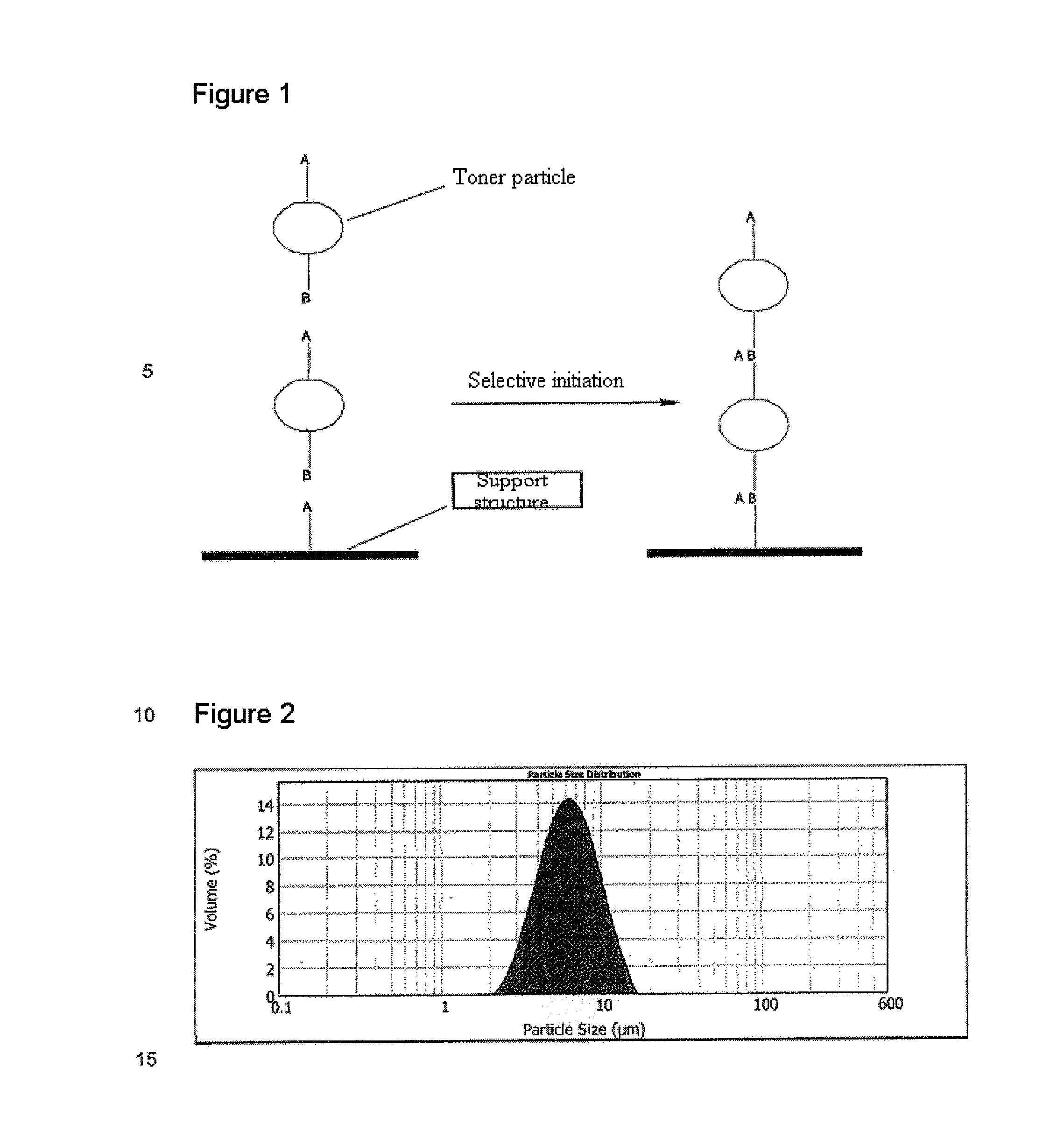Process of making a three-dimensional structure on a support structure
a three-dimensional structure and support structure technology, applied in electrographic process, instruments, transportation and packaging, etc., can solve the problems of increasing the requirements of transplantation, insufficient control of resolution, and high complexity of specific manufacture of transplantation, so as to avoid thermal stress on the printer itself.
- Summary
- Abstract
- Description
- Claims
- Application Information
AI Technical Summary
Benefits of technology
Problems solved by technology
Method used
Image
Examples
example 1
[0105]2.0 g of poly(MMA-co-VAc) particles were dispersed in 50 ml of H2O, and then 5 ml of glacial acetic acid were added. The suspension was stirred for 1 h to hydrolyze the surface of the polymer particles. Thereafter, the particles were filtered off and washed three times each with 20 ml of phosphate buffer (pH=7) and with 20 ml of H2O. Thereafter, the particles were dried under reduced pressure for 4 h. The surface-activated particles were dispersed in 90 ml of n-hexane, and a solution of 3.39 ml (3.13 g) of dimethylallylsilyl chloride in 10 ml of n-hexane was added dropwise.
[0106]The particles were filtered off and washed three times with 20 ml of n-hexane, and dried under reduced pressure for 2 h. The particles were redispersed in 50 ml of H2O, and 4.45 g of EDCHCl were added. Subsequently, 1.79 g of cysteamine were added and the suspension was stirred at RT (room temperature) for 24 h. Thereafter, the particles were filtered off, washed five times with 20 ml each time of H2O ...
example 2
[0107]a) 3.0 g of poly(MMA-co-GMA) particles were dispersed in 75 ml of toluene and the suspension was cooled to 0° C. Subsequently, a solution of 1.68 g of propargylamine in 5 ml of toluene was added dropwise over the course of 20 min. After the suspension had been stirred for 1 h, a solution of 8.87 g of (11-azidoundecyl)chlorodimethylsilane in 25 ml of n-hexane was added and the reaction mixture was warmed to RT. After 4 h, the particles were filtered off and washed five times with 50 ml each time of n-hexane. Thereafter, the particles were dried under reduced pressure for 2 h and then redispersed in 200 ml of a 1% copper(I) salicylate solution for 5 min. Then the polymer particles were filtered off and dried unwashed under reduced pressure for 6 h. Subsequently, the q / m ratio was adjusted with 40 mg of TX-20 silica to a value of −10 μC / g to −30 μC / g, and the particles were printed with an OKI C7000 printer. The support structure used was a glass plate (20×20 cm) which had been t...
PUM
| Property | Measurement | Unit |
|---|---|---|
| size | aaaaa | aaaaa |
| softening temperature | aaaaa | aaaaa |
| softening temperature | aaaaa | aaaaa |
Abstract
Description
Claims
Application Information
 Login to View More
Login to View More - R&D
- Intellectual Property
- Life Sciences
- Materials
- Tech Scout
- Unparalleled Data Quality
- Higher Quality Content
- 60% Fewer Hallucinations
Browse by: Latest US Patents, China's latest patents, Technical Efficacy Thesaurus, Application Domain, Technology Topic, Popular Technical Reports.
© 2025 PatSnap. All rights reserved.Legal|Privacy policy|Modern Slavery Act Transparency Statement|Sitemap|About US| Contact US: help@patsnap.com


